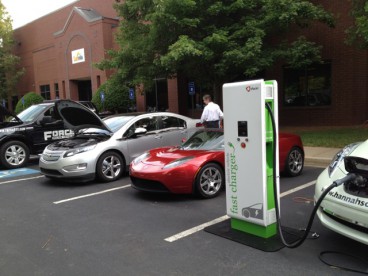
The history of charging stations: from the beginning of the XX century to the present day.
The progress of autonomous electric transport is inextricably linked to the construction of the charging infrastructure, which largely predetermines the prospects for the wide distribution of cars, trucks and buses on electric traction.
Constant improvement of the design of electric vehicles allowed not only to open new areas for their application, but also led to standardization of battery charging methods - having solved key issues in terms of safety and practicality of this process, today the industry puts on the agenda the task of integrating “smart energy” and intelligent transport systems
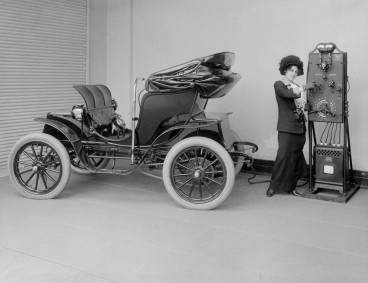 |
Demonstration of Columbia cars and chargers manufactured by The Pope Manufacturing Company. 1912
The commercial success of electric vehicles in the United States, which came in the first decade of the twentieth century, coincided with the beginning of the universal electrification of households. As the newspaper "The New York Times" noted in 1910, thanks to this "... the owners of electric cars were able to install charging equipment right in their own stable."
|
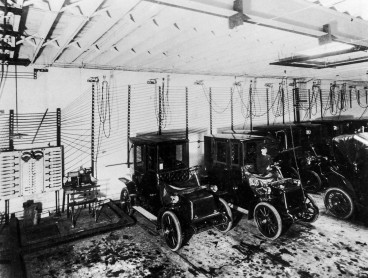 |
Some electric substations were equipped with special platforms for simultaneous charging of several horseless carriages. 1909
|
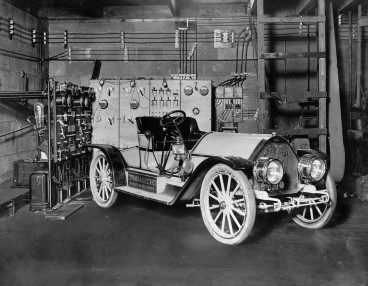 |
Charging the car from the device to the mercury rectifiers in the garage. The inscription on the board reads: "150 miles (240 kilometers in equivalent) on one charge." Cleveland, Ohio. 1910 |
|

|
The rally of 1910 at a distance of 1000 miles (1600 kilometers) was designed to show the reliability of iron-nickel batteries (NiFE) developed by Thomas Edison, which was equipped with a Bailey Electric car.
The famous American inventor was one of the most active supporters of the electrification of road transport. At the very beginning of the electromobile era, he noted:
“Electricity is a worthwhile thing. From now on, there are no extraneous sounds of gearbox work that are confusing with its levers, foul smells of gasoline and noise.”
|
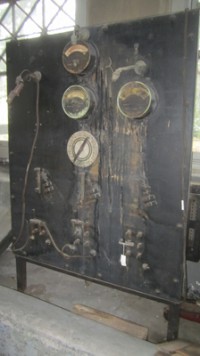 |
Realizing the need for more advanced energy storage devices, the innovator put a lot of effort into finding materials of optimal properties, which led to the commercialization of nickel-iron batteries - in particular, for an extra charge of $ 600, they were staffed by Detroit Electric crews from 1911 to 1916.
Edison left a bright mark in the history of electric vehicles, implementing a number of technological innovations. So, one of the first charging stations of the original construction of the beginning of the 20th century, intended for home use, has survived to this day.
|
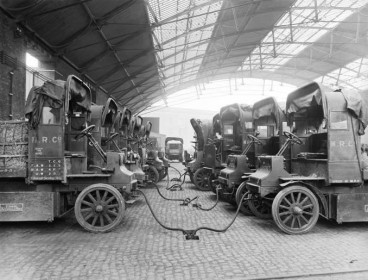 |
There are a lot of effort to make it possible to find out what you need to buy. Detroit Electric crews from 1911 to 1916.
In the area of electric vehicles, So, for the home use, have survived to this day.
Fleet of delivery trucks during charging at the London Depot, July 1917. This time marked the beginning of the transition from horse drawn traction to motorized vehicles.
|
|
|
Discoveries in the areas of electronic components and autonomous power sources of the 1970s-1990s led to renewed interest in electric vehicles. In addition, large-scale fuel crises contributed to this, revealing the extremely unstable nature of global energy based on hydrocarbons.
After several attempts to “revive” the electric vehicle industry, which had a limited effect at the end of the 20th century, Mitsubishi, General Motors, Ford, Nissan and Renault began mass production of rechargeable models designed for the mass consumer.
|














Payments with: